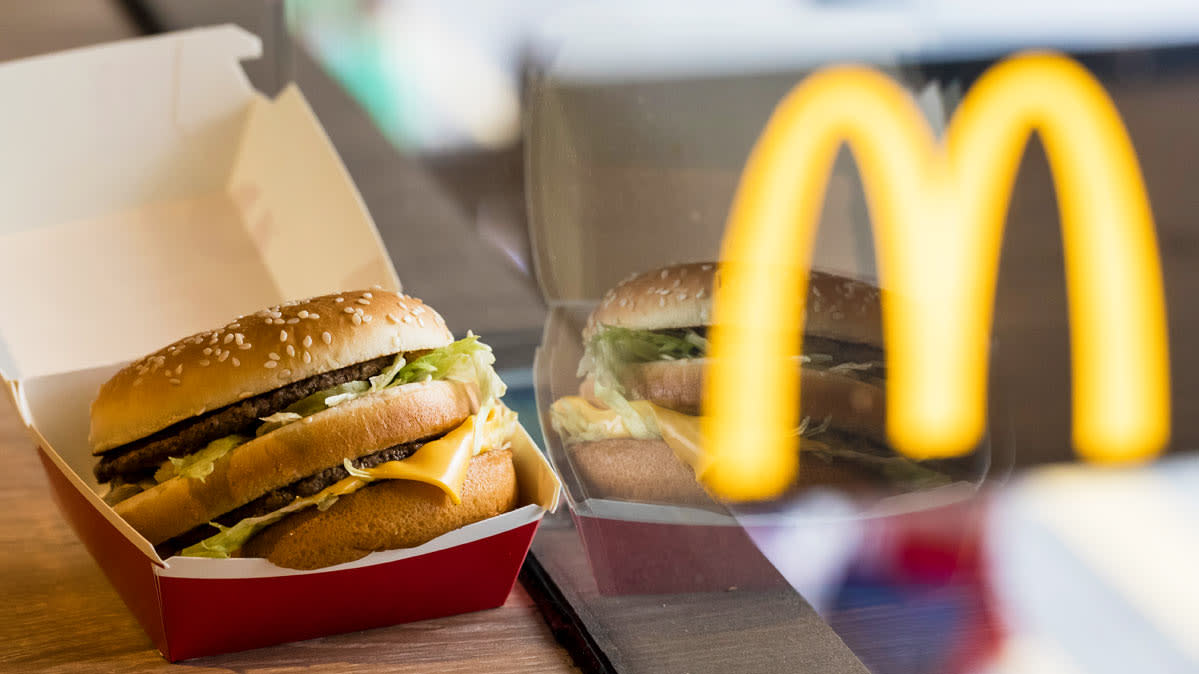McDonald's Announces Plan to Reduce Antibiotic Use in Beef

Consumer Reports has no financial relationship with advertisers on this site.
Consumer Reports has no financial relationship with advertisers on this site.
On Tuesday, McDonald’s announced plans to reduce the use of antibiotics in its global beef supply chain.
The goal is to help combat the growing public health problem of antibiotic resistance, which undermines the ability of these lifesaving drugs to fight disease in humans. Infections from antibiotic-resistant bacteria affect at least 2 million people and cause at least 23,000 deaths in the U.S. every year, according to the Centers for Disease Control and Prevention. The use of antibiotics to prevent diseases that cattle can get when raised in close quarters is a significant contributor to antibiotic resistance, as is the use of antibiotics to promote livestock growth.
The new policy comes after McDonald’s, along with 21 other fast-food burger chains, received a failing grade in October from Consumer Reports and other groups for its approach toward antibiotic use in the beef it serves.
McDonald’s is one of the largest beef buyers in the world, purchasing more than 1.6 billion pounds of beef in 2017.
“McDonalds is obviously one of the gorillas in the room,” says David Wallinga, M.D., senior health adviser with Natural Resources Defense Council. “The onus is going to be on competitors to match this important step that [McDonald’s is] taking on responsible antibiotic use.”
Eighty-five percent of McDonald’s beef comes from 10 countries. The company said it will immediately assess antibiotic use by suppliers in these countries, including the U.S., Brazil, Australia, and Germany. It will develop pilot projects to reduce use, and then set goals for curbing the use of the drugs in each of the markets by the end of 2020. Starting in 2022, McDonald’s will publicly report the results.
Specifically, the fast food giant will limit the use of antibiotics defined by the World Health Organization as being medically important to treat illness in people. Cattle producers supplying McDonald’s won’t be allowed to use the drugs to promote animal growth or prevent disease, except in certain circumstances under the guidances of a veterinarian. Sick animals can also be treated with antibiotics.
“The ultimate impact of McDonald’s efforts will depend on the targets it develops in the next two years, and we’ll be watching that closely,” says Jean Halloran, director of food policy initiatives for Consumer Reports. “While consumers won’t immediately see big changes, if this plan turns out to be as robust as we hope and drives further change this would be very significant to public health.”
Antibiotic Use in Beef
In 2016, McDonald’s took steps to stop using medically important antibiotics in chicken. But as of that year, beef was the biggest driver of antibiotic use in animals in the U.S., accounting for 43 percent of U.S. sales of medically important antibiotics for animal use, Halloran says.
“Today’s commitment focuses on overall reduction of the use of antibiotics important to human medicine in the treatment of cattle in McDonald’s supply chain,” a McDonald’s spokesperson told CR.
“Until the data is reported in 2022, we won’t know whether this change is enough to make a dent in the antibiotic resistance problem, and we urge McDonald’s to utilize independent auditors to ensure compliance with its goals,” Halloran says. “But McDonald’s deserves praise for stepping up and trying to use its market power to address this growing public health crisis.”
Pressure From Consumers
In 2015, when CR and other groups first started grading fast-food chains on antibiotic use, in their annual Chain Reaction report, 20 out of 25 fast food chains had no policies on limiting antibiotics in meat or poultry. Now a majority of chains no longer use medically important antibiotics in chicken. Advocates say that the hope is that a shift by McDonald’s with beef will drive a similar shift in the overall beef industry.
“Beef farmers and ranchers are continuously improving the way antibiotics are used in animals because they care about how their practices impact cattle health as well as antibiotic safety and efficacy,” a spokesperson from the National Cattlemen’s Beef Association told Consumer Reports. “Our industry promotes the judicious use of antibiotics to minimize the potential risk of developing antibiotic-resistant bacteria.”
Consumers have expressed strong preferences for eliminating the unnecessary use of antibiotics.
In 2018, a nationally representative survey by CR found that 78 percent of U.S. adults agreed that producers should stop giving antibiotics to healthy animals. Almost 60 percent said they’d be more likely to eat at restaurants that serve meat that was raised antibiotic-free.
By eliminating the use of antibiotics in poultry with its 2016 policy, McDonald’s received an overall C grade on the most recent Chain Reaction report, which includes policies on pork, chicken, and turkey, despite the F it received on the “Burger Scorecard.”
Three chains received an overall A in the most recent Chain Reaction report: Chick-fil-A, Chipotle, and Panera Bread. All these chains either already serve or are on track to serve meat and poultry that is almost all raised without antibiotics.
More from Consumer Reports:
Top pick tires for 2016
Best used cars for $25,000 and less
7 best mattresses for couples
Consumer Reports is an independent, nonprofit organization that works side by side with consumers to create a fairer, safer, and healthier world. CR does not endorse products or services, and does not accept advertising. Copyright © 2018, Consumer Reports, Inc.

